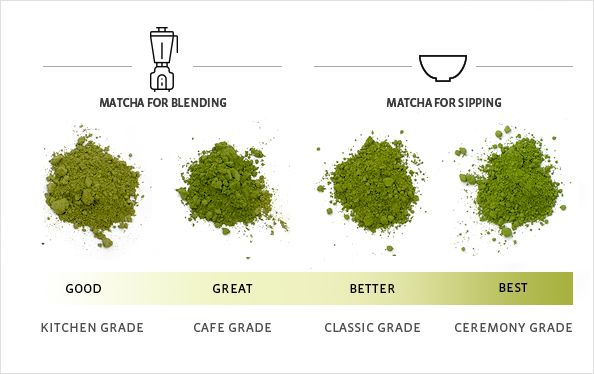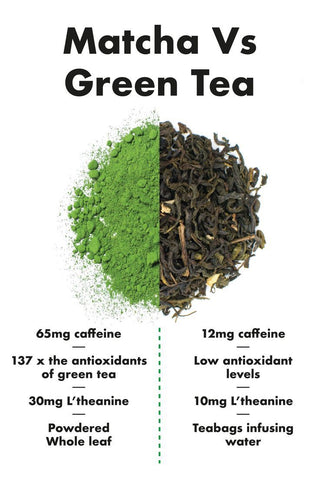In the world of wellness and gourmet drinks, matcha stands out with its vibrant green hue and uniquely rich, umami-packed flavor. Its journey from a ceremonial staple in Japan to a global superfood sensation has been accompanied by a whirlwind of stories, claims, and, inevitably, a few misconceptions.
As matcha continues to win hearts and palates worldwide, it's essential to separate fact from fiction. This guide dives into some common myths and misconceptions surrounding matcha, while shedding light on the truths behind them.
Whether you're a long-time matcha fan or just beginning to explore this fascinating green tea, join us as we debunk these myths and discover what makes matcha a beverage worth celebrating.
Myth 1: All Matcha Tastes the Same
A common myth is that all matcha shares the same flavor profile. However, the reality is far from this.
Matcha's taste varies significantly based on its grade, origin, and processing.
Ceremonial-grade matcha, intended for traditional tea ceremonies, offers a smooth, umami-rich flavor ideal for drinking. Premium grade provides a balance suitable for both drinking and culinary uses, while culinary grade is best for recipes due to its more robust taste.

Source: Matcha Source
Factors like soil composition, climate, and shading techniques also influence the final taste, offering a spectrum of flavors ranging from sweet and creamy to robust and earthy.
Myth 2: Matcha Powder and Regular Green Tea Are Essentially the Same
There are myths about matcha and green tea being almost the same.
Matcha and regular green tea come from the same plant, Camellia sinensis. However, their cultivation and processing paths diverge significantly, leading to distinct differences.

Matcha is grown in the shade for the last few weeks before harvest, boosting chlorophyll and amino acid levels, which accounts for its vibrant color and rich flavor.
After harvesting, the leaves are steamed, dried, ground into a fine powder, and consumed whole, offering more nutrients than steeped green tea leaves.
Matcha drinkers benefit from higher antioxidants, vitamins, and mineral concentrations.
Myth 3: More Expensive Matcha Automatically Means Better Quality
This myth implies that you must spend substantially more money to enjoy good quality matcha.
While it's true that high-quality matcha often comes with a higher price tag, the correlation between price and quality is only sometimes absolute.
Factors such as geographic origin, organic certification, and seasonal variations play significant roles in pricing.
A high price may reflect matcha's rarity or the cost of organic farming practices, but it doesn't guarantee superior flavor or health benefits.
Considering these factors and choosing matcha from reputable suppliers is essential to ensure you're getting the best value and quality.
Myth 4: Matcha Contains Dangerous Levels of Lead
Concerns about lead content in matcha can deter some health-conscious individuals.
It's important to acknowledge that all plants absorb some lead from the environment, but matcha's cultivation and processing methods are designed to minimize this risk.
High-quality matcha, mainly from Japan, is grown in ways that reduce lead absorption, and the rigorous standards for export further ensure safety.
Choosing matcha from reputable sources and regions known for their stringent safety measures can alleviate concerns about lead.
Myth 5: Matcha Keeps You Awake and Disrupts Your Sleep Routine
Due to its caffeine content, many believe that matcha might impair sleep, the same way coffee or other caffeinated drinks do so.
However, matcha's unique combination of caffeine and L-theanine, an amino acid, offers a calmer and more relaxed experience. L-theanine promotes relaxation and can mitigate caffeine's jittery effects, leading to calm alertness.
Studies suggest that L-theanine may improve sleep quality and reduce stress. This makes matcha an excellent choice for those seeking a gentle energy boost without disrupting their sleep patterns.
The L-theanine content in matcha offers a calm and relaxed experience which benefits sleep.
Click here to learn more about how matcha affects sleep.
FAQ: Matcha Myths and Misconceptions
Does the origin of matcha affect its quality?
Yes, the origin of matcha can significantly affect its quality. Matcha from Japan, particularly regions known for tea production like Uji, Kyoto, and Nishio, Aichi, is often of higher quality due to ideal climate conditions, soil quality, and traditional farming practices.
Why is some matcha more expensive than others?
The price of matcha varies based on several factors, including the grade of matcha (ceremonial, premium, culinary), the region of origin, organic certification, and harvesting methods (handpicked leaves tend to be more expensive).
Higher-priced matcha often reflects a higher quality product, but only sometimes; it's essential to consider the brand's reputation and the specifics of the matcha being offered.
How does L-theanine in matcha differ from L-theanine in supplements?
L-theanine in matcha naturally occurs and works synergistically with other compounds in the tea, such as caffeine and antioxidants, to provide a balanced energy boost and enhanced mental clarity.
Are there any scientific studies supporting the health benefits of matcha?
Yes, numerous scientific studies support the health benefits of matcha, including its antioxidant properties, effects on metabolism, and potential to enhance mood and cognitive function. The unique combination of caffeine and L-theanine in matcha has been studied for its ability to improve attention and alertness while reducing anxiety.
Conclusion
In debunking these myths, we've uncovered the nuanced reality of matcha's diverse flavors, health benefits, and unique position among teas.
Understanding these truths allows us to appreciate matcha's rich cultural history and place in a balanced lifestyle.
We encourage you to explore the world of matcha with this newfound knowledge, experimenting with different grades and origins to find your perfect match.
For more insights into the vibrant world of matcha, continue exploring our blog and discover how this versatile superfood can enhance your daily routine.
TL;DR: "Matcha Myths and Misconceptions"
Myth 1 Debunked: Matcha's taste varies greatly depending on its grade, origin, and processing. Not all matcha tastes the same.
Myth 2 Clarified: Matcha and regular green tea differ in cultivation, processing, and nutritional benefits.
Myth 3 Explained: Higher price sometimes means better quality in matcha. Factors like origin, organic certification, and harvest methods play a role.
Myth 4 Addressed: Quality matcha, especially from reputable sources, contains minimal lead, making it safe for consumption.
Myth 5 Resolved: The caffeine in matcha is balanced by L-theanine, promoting calm alertness without disrupting sleep for most people.



